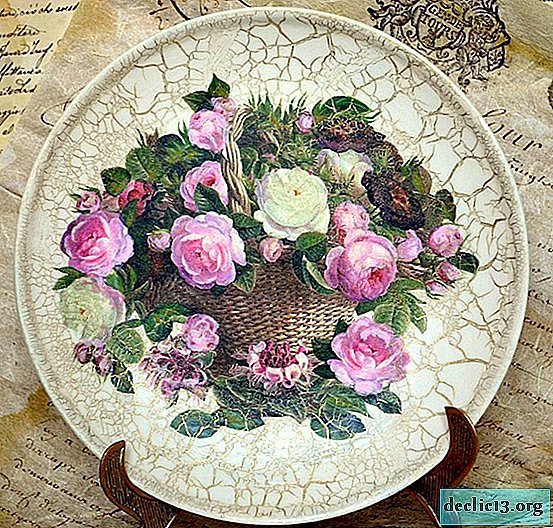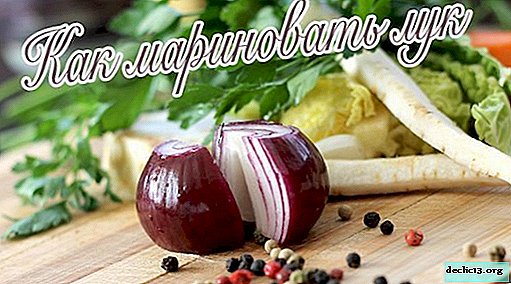Planting and care of perennial garden geraniums in the open ground: photos and instructions

Garden street geraniums are loved by many gardeners. Its popularity is due to the beauty of its inflorescences and decorative shrubs.
It got its name from the Greek word "geranos", which means "crane," because of the shape of its fruits, resembling the beaks of a stork and a crane.
In this article we will talk about planting and caring for garden perennial geraniums in the open ground, as well as how to create favorable conditions for successful growth and flowering.
Description
 Garden geranium is a perennial flowering plant. It became a well-known culture for the garden because of its excellent ability to grow and develop in the open ground.
Garden geranium is a perennial flowering plant. It became a well-known culture for the garden because of its excellent ability to grow and develop in the open ground.
Its inflorescences have pink, red, lilac, blue and purple hues. It grows in the form of bushes with delicate leaves of various sizes. Leaves may have pointed or rounded edges. Garden geranium flowers, consisting of 5 plain petals, can be from 2.5 to 4.5 cm in diameter.
Geranium, depending on the variety, can be of different sizes: from small miniature bushes to tall lush growing plants. This garden beauty is beautiful even without flowers, it looks great next to other plants and is successfully used for decorating personal plots.
How to plant on the site?
TIP: In order for the bushes to please the eye with bright, lush flowering, you need to buy healthy and planting material. You can find it in a good garden store, or order in advance via the Internet.To grow this ornamental shrub in the garden, it is very important to choose the right place for planting. The choice of land should be based on the characteristics of a particular plant variety. Some species need a fair amount of sunlight, while others develop quite nicely in shaded areas.
Plant geraniums in the flower garden should begin in mid-May. In order to avoid the death of young seedlings during accidental frosts, it is necessary to have good covering material on hand: lutrasil or agrofibre.
In order for a plant to fully grow and bloom profusely, it is necessary to observe the rules for planting it. Since garden geraniums have a long root system, the planting hole for planting it needs to be made not very wide, but deep enough, depending on the length of the roots of the planted bush.
Landing Rules:
- The planting hole should be 15 cm deeper than the longest root of the selected plant.
- For the full development of the root system, the distance between the bushes should be about 30 cm.
- The landing pit is filled with a nutrient mixture. Next, the roots of the plant are neatly laid out on it. Then they are covered with soil and watered abundantly.
- Transplanting garden geraniums can be done in autumn or spring. To do this, the bushes are divided into parts so that each delenka must have one growth point and several strong roots. Geranium transplants should be carried out according to the same principle as planting.
Shrub care
Even such an unpretentious and resistant to different conditions garden geraniums need proper care and support. Without this, a beautiful plant will not be able to fully develop and bloom beautifully. Therefore, these activities must be carried out carefully and in a timely manner.
Regular watering
Garden geraniums of any sort need moderate, but regular watering. Especially in the first time after planting, so that rooting is successful. Also increase the amount of watering in the dry season.
Top dressing
The first fertilizer application is carried out after transplantation. Peat and humus infusion are necessary for top dressing. In spring, geraniums need to be fertilized with nitrogen fertilizers. And after the formation of lush foliage, you can begin to make complex fertilizers, which necessarily include potassium, phosphorus, nitrogen and trace elements.
Pruning
You need to spend in the fall. The process consists in removing dried inflorescences and yellowed foliage.
Features planting Himalayan geraniums
 Himalayan geranium is an unpretentious, beautifully flowering perennial plant. Most often used in the decoration of terraces and the design of beautiful borders.
Himalayan geranium is an unpretentious, beautifully flowering perennial plant. Most often used in the decoration of terraces and the design of beautiful borders.
It has low branched stems, which reach a height of no more than 30 cm. The flowers of this type of geranium are large (up to 5 cm in diameter), gently purple with a blue tint and red veins. The leaves are five-lobed, bright green, reach a diameter of 10 cm. Geranium begins to bloom in late May until mid-September.
Creating the necessary conditions for growth
Even such a not too demanding plant, like Himalayan geraniums, for successful growth and flowering need the right conditions and timely care.
Lighting
Open plots with plenty of sun are preferred. But even in a small shadow, geranium will be able to bloom, while its flowers will become especially large.
The soil
Well-drained fertile soil is most suitable. Like most perennial rhizome plants, it does not tolerate stagnation of moisture in soil moisture, especially in spring.
Weeding
For active growth and abundant flowering, bushes need timely weeding of weeds and loosening of the soil.
Fertilizers
- First feeding carried out after the spring snowfall. This will require: nitrogen fertilizers, urea or ammonium nitrate.
- Second feeding needed during a period of intensive growth of the aerial part of the bush. This will require: nitrogen and phosphorus-potassium fertilizers, urea and superphosphate.
- The third and fourth feeding should be carried out at the moment of active flowering of geraniums. This will require: fertilizers with a predominance of potassium and phosphorus.
Excess moisture
Himalayan geranium loves plentiful watering, but an excess of moisture is detrimental to its roots.It is preferable to water it in the morning or in the evening. This will prevent sunburn of the plant.
When to crop?
This procedure is carried out in the second half of summer. At this time, the aging stems of geraniums begin to become bare, which leads to a significant decrease in flowering intensity.
Winter shelter
In autumn, when a steady cooling sets in, the geranium bushes must be protected from freezing. For shelter, straw or coniferous spruce branches are suitable.
How to propagate?
Himalayan geranium is propagated by dividing overgrown bushes. This procedure must be carried out in early spring, after the snow melts.
- With the help of garden pitchforks, overgrown bushes are excavated.
- Geranium rhizomes are divided by the number of seedlings.
- Delenki should be immediately planted in their permanent place.
- At first, new seedlings should be watered quite intensively.
- Further care is the same as for adult plants.
- The soil is mulched with peat or humus.
- For the greenhouse effect, a temporary shelter from a specialized film can be put on the landing site.
Photo
In the photo plants in their natural environment:





Diseases and Pests
Like most other flowering plants, geranium is exposed to various diseases and suffers from pests.
Major diseases
- Rust. Signs: brownish-rusty spots on leaves that dry out and oppose. Treatment: fungicides.
- Gray rot. Symptoms: bluish-gray spots and plaque covering the entire plant. Treatment: fungicides Rovral, Vitarol, Fundazol.
- Stem and root late blight. The plant rots and dies. Treatment: Ridomil and Previkur preparations.
- Alternariosis. Brown spots on the surface and edges of the leaves in the center have a lighter shade. Treatment: fungicides of Ridomil Gold and Skor.
- Verticillin wilt. Leaves sharply turn yellow, fade and fall away. Inflorescences and stems may also die. Prevention: Trichodermin and prevent overdrying of the soil.
Insects
The main "enemies" of geraniums are: aphids, whitefly butterflies, caterpillars and termites.The following drugs will help fight these pests:
- Monterey - Helps to cope with tracks.
- Marathon - destroys aphids, whiteflies and mushroom mosquitoes.
- Messenger - used for prophylaxis, helps prevent shrubs from becoming infected with many diseases.
Conclusion
Perennial garden geraniums are a very beautiful and undemanding green decoration of each garden plot. It is unpretentious and resistant to weather changes and requires complex care. Therefore, these flowers are so loved by summer residents and flower growers who want to grow other garden crops at the same time.

















